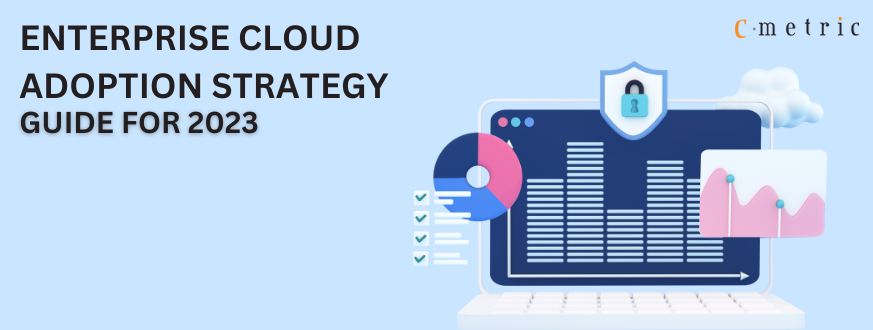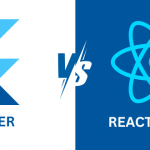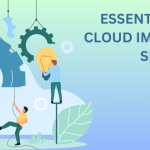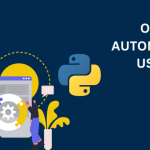Cloud computing helps businesses enhance agility and enable innovation by using process automation, big data analytics, and the serverless and centralized model. They benefit from broader market reach, cost reduction, and faster time to market. However, not all businesses adopt a proper plan during cloud adoption. It leads to issues like complexities, wastage of budget, security and compliance problems, low agility, etc. IT leaders, who have successfully migrated to the Cloud and modernized their digital assets, followed a well-structured plan for cloud adoption.
This blog will explore the concept of enterprise cloud adoption strategy, why businesses need it, the approaches and elements of a cloud strategy, steps to create one, the challenges and tips of cloud adoption, and more.
Enterprise Cloud Adoption Strategy – What and Why
The cloud adoption strategy is a plan to move your digital assets to the Cloud. It’s generally focused on the key business goals of the concerned organization and how and what should be moved to the Cloud.
Everything is included in this strategy, from the digital assets to a part of the migration to the steps of migration. Adopting the Cloud is more than a trend; it’s a need of the hour. You will be surprised to know that nearly 85% of businesses have planned to adopt the Cloud by 2025.
The ease cloud adoption bring is phenomenal and is hard to ignore. However, businesses often tend to get carried away with the idea of adopting Cloud that they often make random choices that don’t match what they seek or need.
This leads to failure in cloud adoption. As much as 30% of cloud initiatives fail mainly because the cloud adoption doesn’t align well with the company’s objectives. This can be avoided with the help of a crisp cloud adoption strategy.
With the help of a well-planned enterprise cloud adoption strategy, businesses can easily learn:
- Why do they have to adopt the Cloud
- All data and digital assets need to be a part of it
- All new cloud-based technologies should be a part of the adoption
- How adoption should happen
- By when will the adoption be finished
- How team should be informed and prepared for this adoption
- What should be the budget for the adoption
- What kind of Cloud is best for your ecosystem
Answering all these questions ensures that a business has clarity about its enterprise cloud adoption strategy and knows in which direction it will move forward. This understanding will trim down the business risk and will lead to success.
What Should be Included in a Cloud Strategy?
Devising a good plan to adopt Cloud for your organization is essential when you wish to make the most of it. Doing so not only ensures quick turnaround and low cost for the process but also improves the productivity of your business.
Behind every viable cloud strategy are the below-mentioned elements.
-
Alignment Between Cloud Strategy and Business Strategy
It’s important to have a cloud strategy that revolves around your objectives as a business. It should be able to answer the question, ‘why moving to the cloud is important to you?’ directly.
The primary step to make this happen is recording the business outcomes.
In addition, when an enterprise cloud adoption strategy is aligned with the business goals, it’s likely to bring high-end agility, reduce operational costs, boost-up business efficiency, and increase data security.
-
Continual Risk Assessment
When cloud migration happens, crucial data moves from one place to another, and it involves a huge risk. In a world where data is real gold, losing a single piece of data can bring a huge hassle. Hence, cloud adoption must have provisions for risk management as well. It should address the security, compliance, availability, and agility risks that are attached to cloud adoption.
-
Shifting attention from cost reduction to maximizing the cloud benefits
Stop keeping your focus only on reducing the cost when you’re designing a cloud strategy. You should also consider other aspects like using the Cloud as much as possible so that you enjoy maximized benefits, revenue growth is experienced, customer experience is boosted, and the best innovation is on the board.
-
Define the shared responsibilities.
When you’re adopting the Cloud, you need to understand that you and your cloud provider are going to be in a close association. The shared responsibilities between you two should be well-defined and mentioned in the adoption strategy for smooth operations.
Top 3 AWS Cloud Migration Challenges and Ways to Overcome Them
Steps to Construct an Enterprise Cloud Adoption Strategy
Now that you’ve clarity on why a cloud strategy is essential and what should be a part of it, it’s time to understand how to make it happen. Here are the steps involved in the process.
Step #1 – Set Up a Team
You can’t let anyone handle this critical job of cloud adoption. So, you should have a cloud strategy team ready to help you. In most cases, the CTO of the organization heads the cloud adoption strategy team.
This team will bear the responsibilities like creating a roadmap, checklist, implementation process, and stakeholder communication. Having a team is important because it will help you make a fast decision, choose the right cloud path, and manage the Cloud.
Step #2 – Conduct Extensive IT Assets
As cloud adoption mainly deals with the IT assets of a company, it’s essential to start by analyzing the IT infrastructure and finding which areas require improvement. In this analysis, you also have to find out which applications should be moved to the Cloud and which shouldn’t.
You need to roll up your sleeves to find out the existing roadblock and future opportunities for cloud adoption.
Step #3 – Decide the Right Kind of Cloud
Multiple types of cloud models are there. You can choose from IaaS, SaaS, PaaS, cloud-native, and many more options. All these Cloud approaches work differently and bring different benefits to the table. Hence, you need to understand which cloud type is best for you and will be able to address your technology concerns.
Step #4 – Choosing the Right Kind of Cloud Provider
The market is filled with cloud providers, and you have to make a call here. Conduct market research extensively on cloud providers and decide which will work best for you.
Step #5 – Pick the Right Kind of Cloud Computing Deployment Model
Next, you must learn about the different cloud computing deployment models. The given choices are public Cloud, private Cloud, Hybrid Cloud, and multi-cloud. Each one is delivered and deployed differently. Take out some time to understand the bright and downsides of each model and pick the one that suits you the most.
Step #6 – Get the Team Ready for it
You need to make sure that the team is equipped enough to deal with the upgraded technology. For this, you need to reskill and upskill the teammates. Try to understand the current technology understanding of the teammates and identify the areas where it requires improvement. This will reduce burnout and increase the confidence of the employees.
In Conclusion
Moving ahead in the enterprise ecosystem is difficult for any enterprise if the Cloud is not by your side. While cloud adoption is the need of the hour, it shouldn’t go unplanned and have no direction. This will bring no fame and benefit. This is why having an enterprise cloud adoption strategy is very important.
With this, it’s easy for businesses to know in which direction they have to move and how this movement should happen. It works like a safety net for businesses and ensures success. Choose a cloud development services partner who has proven experience and expertise in creating enterprise cloud adoption strategies; we’re sure you’ll succeed.















Get in Touch